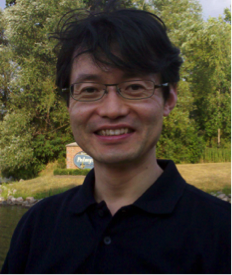Solid-State and Nano Seminar
Integrated Optofluidic Platforms for Immunofunctional Analysis: Nanoplasamonic Approach
Add to Google Calendar

Cellular phenotypes, such as their morphologies, developments, biochemical and physiological properties, functions, and behaviors, indicate the diseased conditions of hosts. This seminar talk discusses our recent progress at the University of Michigan towards development of new assay technologies for analyzing phenotypes of immune cells. Our study employs an emerging technology called "optofluidics," which synergistically integrates optics/photonics and microfluidics on the same lab-on-a-chip platform. Our group has recently developed a microfluidic immunophenotyping assay (MIPA) device integrating label-free gold nanorod plasmonic biosensor arrays and demonstrated its implementation for near real-time monitoring of the immune status of critically-ill patients at the University of Michigan C.S. Mott Children's Hospital. This technology holds promise to provide a foundation for clinicians to precisely control patients' immune systems by immunomodulatory therapy with optimal drug administration timing and dosage.
Katsuo Kurabayashi is Professor of Mechanical Engineering and Electrical Engineering and Computer Science at the University of Michigan, Ann Arbor. He received his BS in Precision Engineering from the University of Tokyo in 1992, and his MS and PhD in Materials Science and Engineering from Stanford University, CA, in 1994 and 1998, respectively. His current research focuses on optofluidics, nanoplasmonic and biomolecular biosensing, and microsystems for immunology, clinical diagnosis, and analytical chemistry. He received the 2001 NSF Early Faculty Career Development (CAREER) Award, and the Robert Caddell Memorial Award in 2005, the Pi Tau Sigma Outstanding Professor Award in 2007, the University of Michigan ME Outstanding Achievement Award in 2013, the University of Michigan Ted Kennedy Family Team Excellence Award in 2015.aculty
 MENU
MENU 
